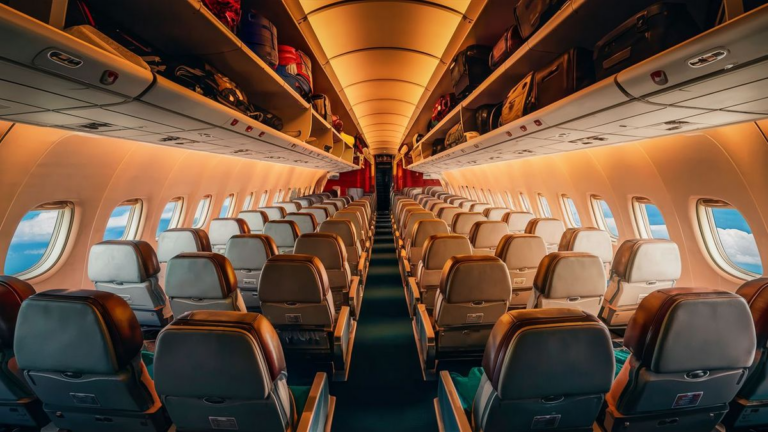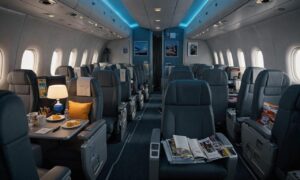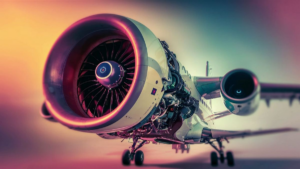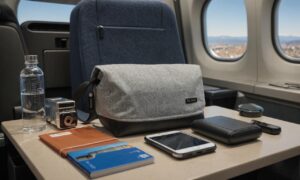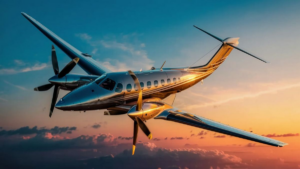When it comes to the question of how many people can fit on a plane, several factors come into play. From the type of aircraft to its configuration and purpose, numerous variables determine the seating capacity of an airplane. Let’s delve into the intricacies of this topic to provide a comprehensive understanding.
Aircraft Type
The seating capacity of a plane heavily depends on its type. Commercial airliners vary significantly in size, ranging from small regional jets to large wide-body aircraft. Each type is designed with specific passenger capacities in mind, dictated by factors such as fuselage size and wing span.
Regional Jets
Regional jets are smaller aircraft commonly used for short-haul flights. They typically accommodate fewer passengers, often ranging from around 50 to 100 individuals, depending on the specific model and configuration.
Narrow-Body Aircraft
Narrow-body aircraft, such as the Boeing 737 and Airbus A320 families, are the workhorses of commercial aviation, serving a wide range of routes. These planes typically seat between 100 and 200 passengers, depending on the seating arrangement chosen by the airline.
Wide-Body Aircraft
Wide-body aircraft, including the Boeing 777 and Airbus A330, offer greater capacity and range. These planes are commonly used for long-haul flights and can accommodate anywhere from 200 to over 500 passengers, depending on the configuration chosen by the airline.
Seating Configuration
Within each aircraft type, seating configurations can vary significantly, impacting the total number of passengers that can be accommodated. Airlines have the flexibility to choose between different layouts, including economy class, premium economy, business class, and first class.
Economy Class
Economy class typically features the highest passenger density, with rows of seats arranged in a tight configuration to maximize capacity. While this allows airlines to accommodate more passengers, it can also result in less legroom and comfort for travelers.
Business and First Class
Business class and first class cabins offer more spacious seating arrangements, with larger seats and increased legroom. However, these premium cabins occupy more space on the aircraft, reducing the overall seating capacity.
Regulatory Considerations
Regulatory bodies such as the Federal Aviation Administration (FAA) and the European Aviation Safety Agency (EASA) impose strict guidelines on aircraft certification and passenger safety. These regulations include requirements for emergency exits, aisle width, and passenger-to-exit ratio, all of which influence the maximum seating capacity of an aircraft.
In conclusion, the number of people that can fit on a plane varies depending on several factors, including the type of aircraft, seating configuration, and regulatory considerations. While larger aircraft generally have higher capacities, the specific layout chosen by the airline plays a significant role in determining the final seating capacity. Ultimately, airlines strive to balance passenger comfort with operational efficiency to provide a safe and enjoyable travel experience for all passengers.
Environmental Impact
Another aspect to consider when discussing the capacity of planes is their environmental impact. With concerns about carbon emissions and climate change on the rise, there’s a growing interest in understanding how many people can be transported efficiently while minimizing the ecological footprint of air travel.
Fuel Efficiency
Newer aircraft models often boast improved fuel efficiency compared to older ones. Manufacturers invest in technologies that enhance aerodynamics, reduce weight, and optimize engine performance to make flights more eco-friendly. Maximizing passenger load while maintaining operational efficiency is crucial for reducing emissions per capita.
Alternative Fuels and Technologies
The aviation industry is exploring alternative fuels and propulsion technologies to mitigate its environmental impact. Biofuels derived from sustainable sources and electric propulsion systems are among the innovations being developed to reduce the carbon footprint of air travel. The adoption of these technologies could potentially influence the seating capacity of future aircraft.
Frequently Asked Questions
| Question | Answer |
|---|---|
| Can airlines change seating configurations? | Yes, airlines can adjust seating configurations to meet their operational needs and market demand. This flexibility allows them to optimize revenue and accommodate varying passenger preferences. |
| Are there limits on the number of passengers for safety reasons? | Regulatory bodies impose limits on passenger capacity based on safety considerations, including emergency evacuation procedures and passenger-to-exit ratios. These limits ensure that aircraft can be evacuated safely in the event of an emergency. |
| How do airlines determine seating arrangements? | Airlines consider factors such as passenger demand, route length, and competition when determining seating arrangements. They aim to strike a balance between maximizing revenue and providing a comfortable travel experience for passengers. |
See also:

